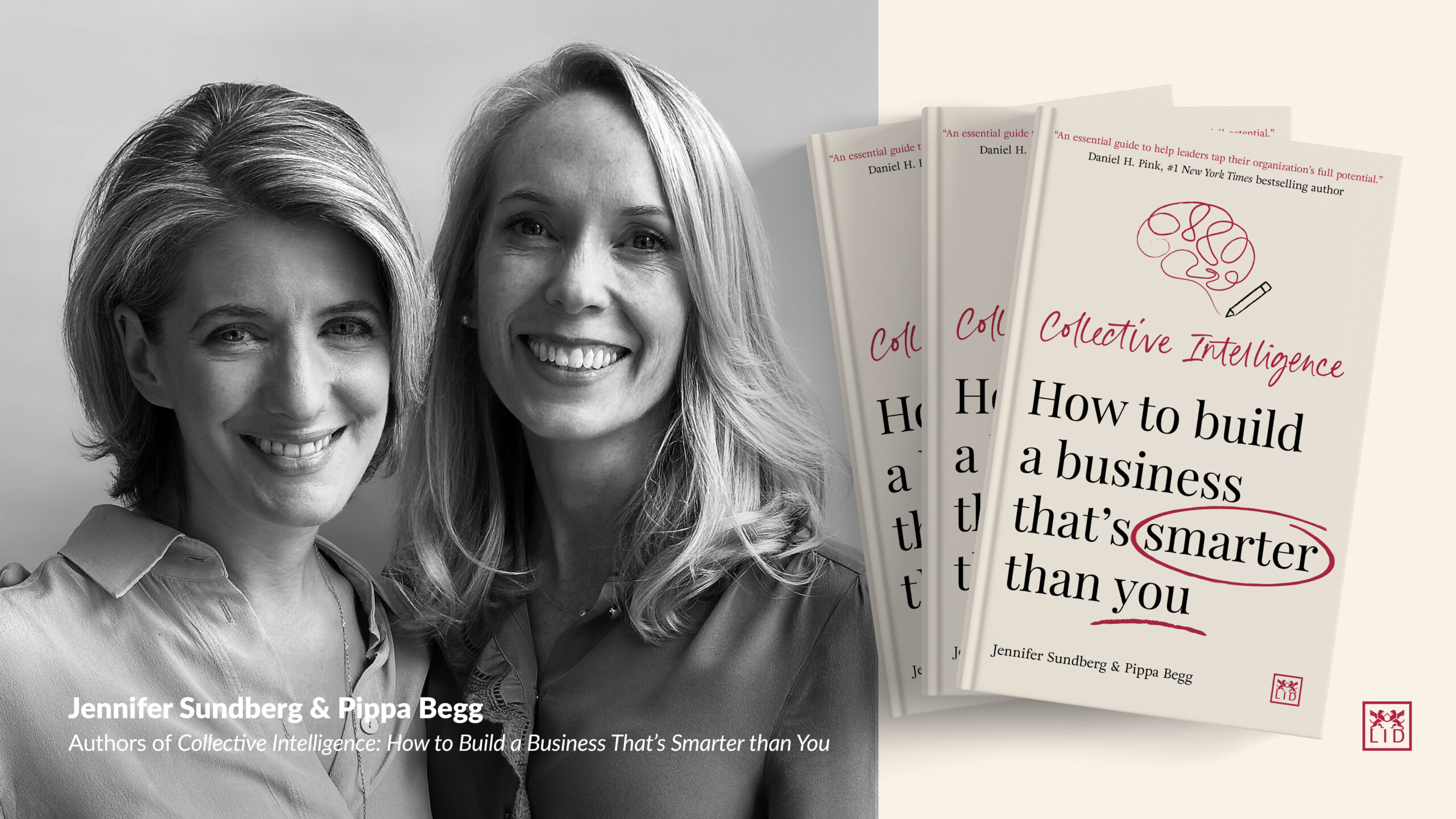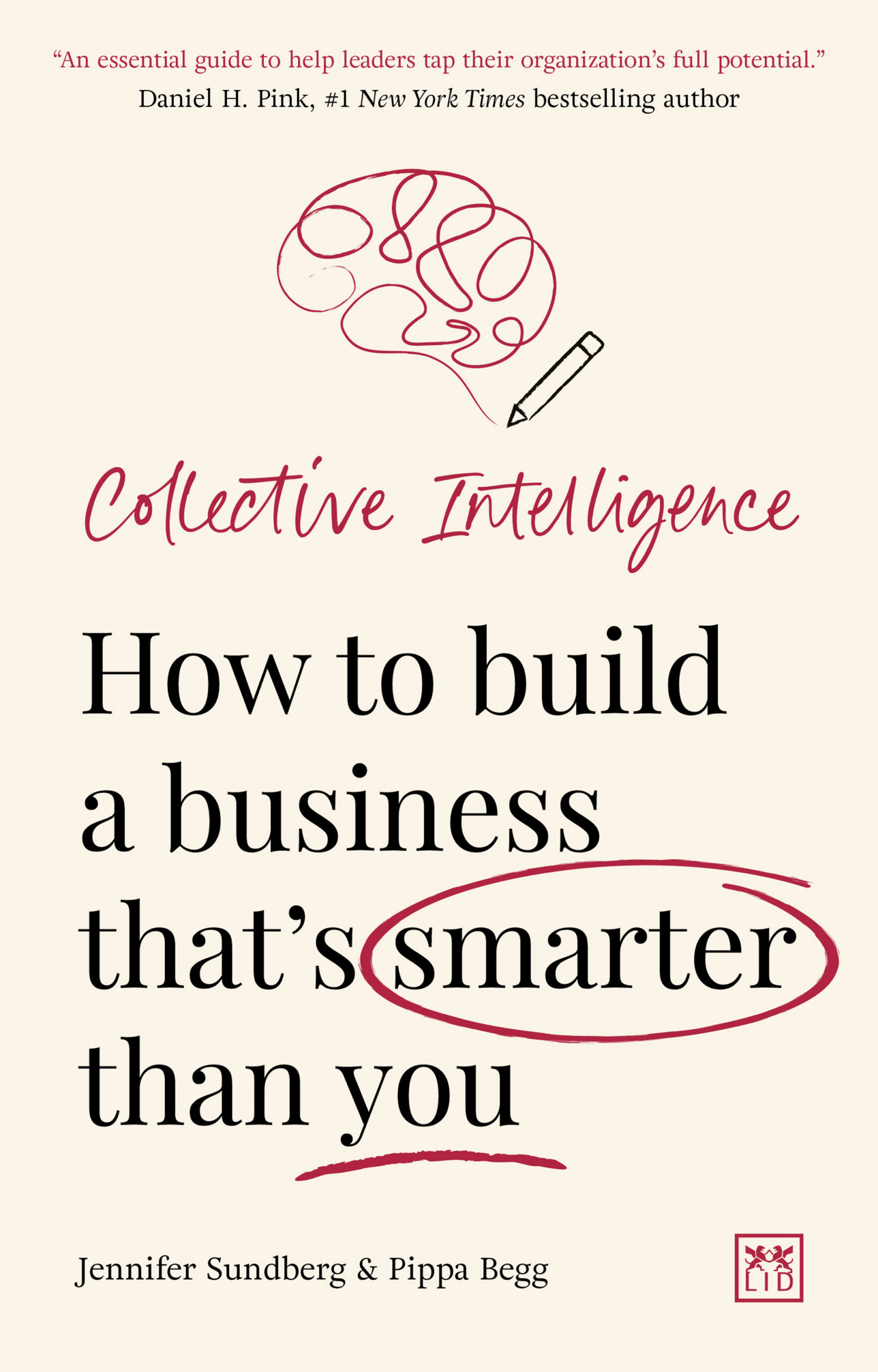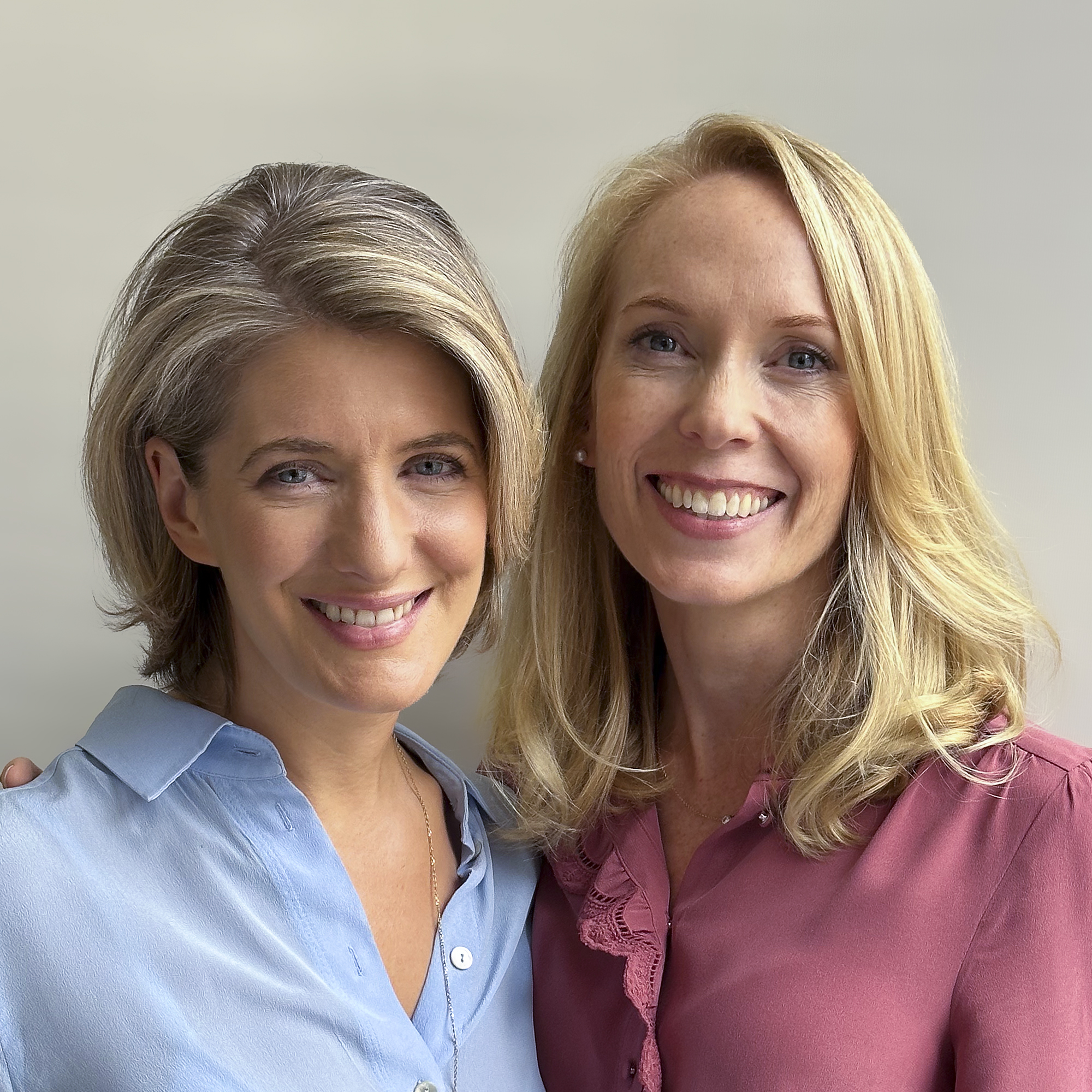|
How to Build a Business That Can Turn on a Dime with Jennifer Sundberg & Pippa Begg
How to Build a Business That Can Turn on a Dime

By Guest Contributors Jennifer Sundberg and Pippa Begg
Authors of Collective Intelligence, Jennifer Sundberg and Pippa Begg, reveal why companies need both a single-minded focus and the ability to change that focus when required, and how to do it.
In the late 1990s, Netscape was a big deal. CEO Jim Barksdale, an experienced executive who’d previously run US telecom giant AT&T, took the company public in 1995 and it quickly cornered 80% of the web browser market.[i]
Barksdale, who hailed from Mississippi, had a “vast mental library of Southern homilies”, and regularly peppered conversations with his own brand of witty aphorisms. According to his former colleagues, one of his favourites was about focus: “The main thing is to make sure that the main thing stays the main thing.”[ii]
Nothing controversial there. In fact, one of the things that marks all great leaders out is their ability to rally the troops behind a clear purpose or goal.
But it is possible to have too much of a good thing.
Unfortunately for Netscape, their ‘main thing’ turned out to be the wrong thing. After a failed push into the enterprise market and subscription models, and with Microsoft offering superior service and a free-to-consumer product, the company reported its first losses in 1998. The share price plunged, and it was acquired by AOL later that year. In 2007, the Netscape web browser was discontinued.
Barksdale was right to praise the virtues of focus, but he missed an important point — that focus can easily turn into tunnel vision. If your flag is planted on the wrong hill, you’ll end up in the wrong place. Sometimes, you need to pivot to a new ‘main thing.’
Can you teach an elephant to dance?
To thrive in a rapidly changing world, companies need both a single-minded focus and the ability to change that focus when required. But turning your ‘new main thing’ into everybody else’s ’new main thing’ is easier said than done.
Just look at Nokia. In 2000, the Finnish giant dominated the mobile market with sleek, reliable handsets and its highly addictive game, Snake. Yet already its CEO Jorma Ollila recognized the need to change.
“In ten years’ time I would like Nokia to be dubbed as the company that brought mobility and the internet together,” he toldThe Economist.[iii] Throughout the early 2000s, Ollila reiterated the importance of software, services, data and the internet to Nokia’s continued success.
When the iPhone came out in 2007, bringing mobility and the internet together as Ollila had hoped to do, Nokia had only just stopped making 3310s. Its market share fell from 49% that year, according to Gartner, to just 3% in 2013, one of the most remarkable falls from grace in business history.[iv]
The story is usually told as one of strategic myopia, but that isn’t true. Nokia’s leadership had been trying, unsuccessfully, to shift direction for years.
Perhaps Nokia’s size and bureaucratic inertia got in the way. Or its previous success was to blame, keeping employees focused on what had worked before — right up to the point that those things stopped working, which was of course too late.
Either way, the CEO repeatedly telling them to change was not enough to make them take their eyes off the old prize.
So, what is enough?
When Dame Carolyn McCall took the helm at low-cost airline easyJet in 2010 after 24 years in the UK news industry, she was dismissed by her peers as a “media luvvie”. She had never worked in the sector and seemed an odd choice to turn the struggling business around.
With oil at over $100 a barrel, consumer spending yet to recover from the financial crisis and a volcanic ash cloud grounding flights all over Europe, easyJet was in a tight spot. What’s more, its USP (low, low costs) had been eroded as competitors entered the space.
The previous management had responded by doubling down on their cost-cutting strategy. But there wasn’t any fat left for McCall to trim. The bones had been picked clean. Staff had to bring their own stationery to the office, which was in an aircraft hangar.
As she walked the floors, chatting with customers and crew at HQ, in the airports, and at 30,000 feet, McCall heard one problem loud and clear: everyone was unhappy. Passengers because of poor service; crew because of poor management. Employee morale was dead on the ground and customer satisfaction was right along with it.
She saw clearly that the two problems were connected. To make easyJet an airline that people wanted to fly with and work for, she needed to change the narrative. If she could lift her team’s morale, everything else would follow.
So, McCall flipped easyJet’s priorities, from Profit-Customers-People to People-Customers-Profit.
But she didn’t do this by simply telling people to change. She changed the focus by changing the questions that everyone in the business was asking.
Over the next few months, we worked with McCall to hone and then embed one question into all board papers, KPI dashboards and management decks: “How do our people feel, and what can we do better to support and enable them?” This made it a priority for the executive team, who then made it a priority for their direct reports and so on.
By the time she left in 2017, she had doubled market share, grown revenues by 70% and increased profits by 162%.[v]Team, customer, and shareholder satisfaction were transformed, because she got her people thinking about a new ‘main thing’.
How do you make it stick?
The questions McCall put front and centre for her people were not a touchy-feely PR exercise. They directly determined the metrics, targets, and incentives that drove the business.
By baking them into every decision paper, monthly management report, and regular meeting, she made them part of the rituals of everyday business life. And this made it difficult for executives, and their teams, not to focus on easyJet’s new priorities.
She helped them link their actions with the company’s broader strategy and vision. And she clearly and impactfully communicated that vision — one where happy crew led to happy customers, leading to better results — at every opportunity.
In the same way that teaching elephants to dance requires more than a charismatic choreographer to demonstrate the moves, building a focused and flexible organisation requires the CEO to do more than shout their goals from the rooftop. They need to change the questions they’re asking too.
[i] “Barksdale, Jim,” Encyclopedia.com: https://www.encyclopedia.com/economics/encyclopedias-almanacs-transcripts-and-maps/barksdale-jim
[ii] Greg Miller, “Netscape’s Navigator,” Los Angeles Times, 8 February 1998: https://www.latimes.com/archives/la-xpm-1998-feb-08-fi-16789-story.html
[iii] A Finnish fable,” The Economist, 12 October 2000: https://www.economist.com/business-special/2000/10/12/a-finnish-fable
[iv] Dave Lee, “Nokia: The Rise and Fall of a Mobile Giant,” BBC, 3 September 2013: https://www.bbc.co.uk/news/technology-23947212
[v] Arun Kakar, “Carolyn McCall’s 3 Biggest Achievements as easyJet CEO,” Management Today, 21 November 2017: https://www.managementtoday.co.uk/carolyn-mccalls-3-biggest-achievements-easyjet-ceo/women-in-business/article/1450836
ABOUT THE AUTHORS
Suggested Reading
 The real lesson from Amazon, Google and the like – that enables them to keep winning year after year – is that they do business intelligently. Business is complex, which is why it requires a deep, practical intelligence to survive, let alone thrive. This book shows why businesses that act smartest, and display an organizational capacity for critical thinking, underpinned with clear and effective communication, allowing them to develop razor-sharp focus, are the ones that really stand out and achieve sustained success.
The real lesson from Amazon, Google and the like – that enables them to keep winning year after year – is that they do business intelligently. Business is complex, which is why it requires a deep, practical intelligence to survive, let alone thrive. This book shows why businesses that act smartest, and display an organizational capacity for critical thinking, underpinned with clear and effective communication, allowing them to develop razor-sharp focus, are the ones that really stand out and achieve sustained success.

 Jennifer Sundberg
Jennifer Sundberg